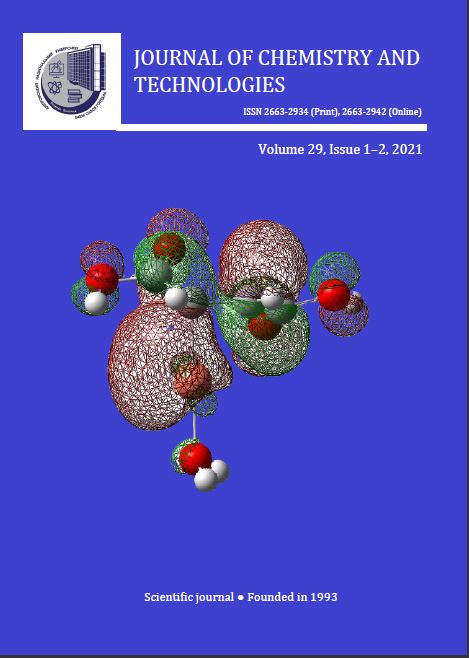ELECTROLYSIS OF NaCl SOLUTIONS IN FLOW SYSTEMS
DOI:
https://doi.org/10.15421/082111Abstract
The electrolysis of NaCl solutions in flow systems was investigated. It has been shown that in order to minimize the conversion of hypochlorite to chlorate at the anode and the reduction of hypochlorite ions at the cathode, one should perform electrolysis at a minimum stirring rate of the solution relative to the electrodes. Removal of the membrane from the cell leads to only a slight decrease in the current efficiency of sodium hypochlorite in the range of 1-3% and a slight increase in the pH of the solution, which has a positive effect on its stability. Current efficiency of chlorates do not change. A positive effect is the reduction of cell voltage, which improves the energy efficiency of sodium hypochlorite synthesis. With a current load of 2 A and the use of two flow cells at a volumetric flow rate of 8.7 L h-1, one can sinthesize a high-purity solution of sodium hypochlorite containing 500 mg L-1 NaClO and 0.6 mg L-1 NaClO3. The current efficiency of hypochlorite and sodium chlorate is 78 and 0.2%, respectively. Electrochemical reactor with three flow cells with a capacity of 9.2 L h-1 at a current load of 3 A allows one to continuously produce a solution containing 1000 mg L-1 NaClO and not more than 6 mg L-1 NaClO3. Created prototypes of electrolyzers have successfully passed the stages of laboratory and experimental tests.
Downloads
Published
Issue
Section
License
Copyright (c) 2021 Днипровский национальный университет имени Олеся Гончара

This work is licensed under a Creative Commons Attribution 4.0 International License.
- Authors reserve the right of attribution for the submitted manuscript, while transferring to the Journal the right to publish the article under the Creative Commons Attribution License. This license allows free distribution of the published work under the condition of proper attribution of the original authors and the initial publication source (i.e. the Journal)
- Authors have the right to enter into separate agreements for additional non-exclusive distribution of the work in the form it was published in the Journal (such as publishing the article on the institutional website or as a part of a monograph), provided the original publication in this Journal is properly referenced
- The Journal allows and encourages online publication of the manuscripts (such as on personal web pages), even when such a manuscript is still under editorial consideration, since it allows for a productive scientific discussion and better citation dynamics (see The Effect of Open Access).


